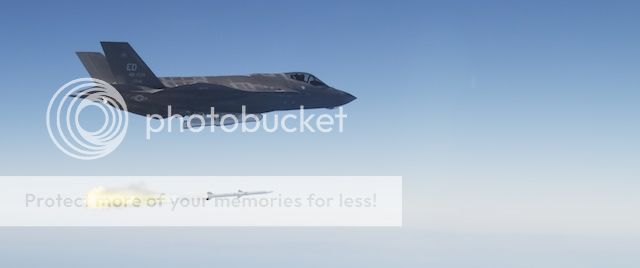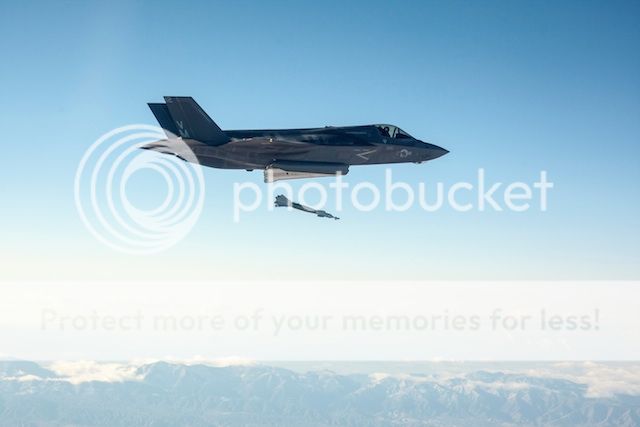It looks like you're using an Ad Blocker.
Please white-list or disable AboveTopSecret.com in your ad-blocking tool.
Thank you.
Some features of ATS will be disabled while you continue to use an ad-blocker.
share:
reply to post by Sammamishman
Speaking as an ex-Navy Aviation Machinist Mate, I have concerns about maintenance with these newer aircraft. I worked on Sikorsky Sea King helicopters in the mid 80's on board carriers. The F-14 had been around a while and we were just getting the F/A-18's. The one thing that I noticed was that when I needed a fuel or hydraulic line, I went to Supply and was given a section of steel or aluminum tubing and a bag of fittings. I then measured the old line and fabricated a new line. When the guys working on the newer aircraft needed a line, they went to Supply and got a pre-fabricated line that was shrink wrapped to a piece of cardboard.
My main reason for being concerned is that every thing is fine as long as the Supply chain holds up. The US Navy has not faced a threat to it's supply lines since the middle of World War II. These new aircraft are great, but, they are only good as long as they can fly. If the wrong part breaks, they are just expensive paperweights until they can get a new part. What happens if they can't get that part?
Speaking as an ex-Navy Aviation Machinist Mate, I have concerns about maintenance with these newer aircraft. I worked on Sikorsky Sea King helicopters in the mid 80's on board carriers. The F-14 had been around a while and we were just getting the F/A-18's. The one thing that I noticed was that when I needed a fuel or hydraulic line, I went to Supply and was given a section of steel or aluminum tubing and a bag of fittings. I then measured the old line and fabricated a new line. When the guys working on the newer aircraft needed a line, they went to Supply and got a pre-fabricated line that was shrink wrapped to a piece of cardboard.
My main reason for being concerned is that every thing is fine as long as the Supply chain holds up. The US Navy has not faced a threat to it's supply lines since the middle of World War II. These new aircraft are great, but, they are only good as long as they can fly. If the wrong part breaks, they are just expensive paperweights until they can get a new part. What happens if they can't get that part?
reply to post by JIMC5499
You can thank the F-4 for how easy the F-14 and F-15 were to work on. One of the things with the F-4 was that it was redonculously hard to work on. So one of the first key requirements with the F-15 program, that bled over to the F-14 was ease of maintenance. The F-4 had side specific engines on it, where the F-14/-15 could take them out and switch them around (among many other things).
You can thank the F-4 for how easy the F-14 and F-15 were to work on. One of the things with the F-4 was that it was redonculously hard to work on. So one of the first key requirements with the F-15 program, that bled over to the F-14 was ease of maintenance. The F-4 had side specific engines on it, where the F-14/-15 could take them out and switch them around (among many other things).
reply to post by Zaphod58
The F-14's engines were no joy to change. It was a bitch to get those panels off and on and then get the engine onto the rails of its carrier, especially when the boat was rocking even the slightest. I may have worked on helos, but I was responsible for knowing every aircraft in the Navy. After 130 days straight in the Indian Ocean, I knew them all pretty well. My E-5 exam had P-3 and C-130 questions on it. Thank God we had the E-2 to play with. (same engine type).
If you want an easy engine change, you cant beat the T-38, F-5 and F-20 family of aircraft. A couple of wire connectors, a couple linkages, a few bolts and move the entire tail of the aircraft out of the way.
The F-14's engines were no joy to change. It was a bitch to get those panels off and on and then get the engine onto the rails of its carrier, especially when the boat was rocking even the slightest. I may have worked on helos, but I was responsible for knowing every aircraft in the Navy. After 130 days straight in the Indian Ocean, I knew them all pretty well. My E-5 exam had P-3 and C-130 questions on it. Thank God we had the E-2 to play with. (same engine type).
If you want an easy engine change, you cant beat the T-38, F-5 and F-20 family of aircraft. A couple of wire connectors, a couple linkages, a few bolts and move the entire tail of the aircraft out of the way.
reply to post by JIMC5499
The F-14 "ease of maintenance" was more of a bleed over from the F-4 days. The F-15 was designed in from the start. An F-15 engine change was a matter of a few hours, and was pretty easy. But even an F-14 engine change was fairly easy compared to what it was like before that.
The biggest problem with the F-14 engine was it was a steaming POS when they first started.
The F-14 "ease of maintenance" was more of a bleed over from the F-4 days. The F-15 was designed in from the start. An F-15 engine change was a matter of a few hours, and was pretty easy. But even an F-14 engine change was fairly easy compared to what it was like before that.
The biggest problem with the F-14 engine was it was a steaming POS when they first started.
The Dept. of Defense Inspector General has reported on the F-35 program.
I'm out of my depth on aircraft so can't comment at all.
Here's a link to the report.
www.thinkdefence.co.uk... ed%3A+ThinkDefence+%28Think+Defence%29
I'm out of my depth on aircraft so can't comment at all.
Here's a link to the report.
www.thinkdefence.co.uk... ed%3A+ThinkDefence+%28Think+Defence%29
new topics
-
Putin, Russia and the Great Architects of the Universe
ATS Skunk Works: 1 hours ago -
A Warning to America: 25 Ways the US is Being Destroyed
New World Order: 5 hours ago -
President BIDEN's FBI Raided Donald Trump's Florida Home for OBAMA-NORTH KOREA Documents.
Political Conspiracies: 11 hours ago
top topics
-
President BIDEN's FBI Raided Donald Trump's Florida Home for OBAMA-NORTH KOREA Documents.
Political Conspiracies: 11 hours ago, 28 flags -
A Warning to America: 25 Ways the US is Being Destroyed
New World Order: 5 hours ago, 10 flags -
Gaza Terrorists Attack US Humanitarian Pier During Construction
Middle East Issues: 17 hours ago, 8 flags -
Las Vegas UFO Spotting Teen Traumatized by Demon Creature in Backyard
Aliens and UFOs: 16 hours ago, 7 flags -
2024 Pigeon Forge Rod Run - On the Strip (Video made for you)
Automotive Discussion: 17 hours ago, 4 flags -
Is AI Better Than the Hollywood Elite?
Movies: 12 hours ago, 3 flags -
Maestro Benedetto
Literature: 12 hours ago, 1 flags -
Putin, Russia and the Great Architects of the Universe
ATS Skunk Works: 1 hours ago, 1 flags



